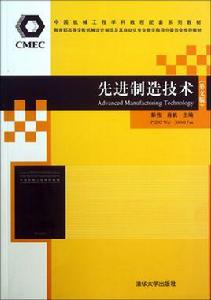圖書簡介
本英文版教材突破了傳統英文教材系統、全面的特點,捨棄了已經套用或普遍開設了獨立課程的內容,如數控加工、CAD/CAM等,增加了有廣泛套用前景或我國製造業發展迫切需要的先進制造技術內容,如綠色製造、物流工程等。每個主題由基本原理和案例分析兩部分組成,以案例分析為切入點,以圖文並茂為表現形式,拓展學生的套用靈感,激發他們的學習興趣。本書可作為機械工程專業高年級本科生和研究生“先進制造技術”的雙語教材和課外讀本。
目錄
CONTENTS
1IndustrialDesign1
Editor:ZHANGLufang
1.1Introduction1
1.1.1TheDefinitionofIndustrialDesign1
1.1.2ResearchFieldsofIndustrialDesign3
1.1.3FeaturesofIndustrialDesign5
1.2DesignFundamentals7
1.2.1DesignandArt7
1.2.2EngineeringFundamental10
1.2.3Ergonomics11
1.2.4ExpressionofDesign18
1.3DesignProcedure23
1.3.1TraditionalProductDevelopingMode23
1.3.2ModernProductDevelopingMode24
1.3.3TheBasisforUCDMethodology24
1.3.4TheAdvantagesandDisadvantagesoftheUCD26
1.4CaseStudies:BreakfastMachine27
Problems28
References29
2ReverseEngineering30
Editor:LIUYunfeng
2.1Introduction30
2.2PrincipleofRE30
2.2.1Conception30
2.2.2GenericProcessofRE32
2.2.3ApplicationAreas32
2.3DataAcquisitionMethods33
2.3.1ContactMethods33
2.3.2NonContactMethods36
2.4DataProcessing38
2.4.1PointsandImagesPhase38
2.4.2PolygonPhase40
2.4.3CurvePhase40
2.4.4NURBSSurfacePhase41
2.5CommercialRESoftwareIntroduction43
2.6CaseStudies44
2.6.1IndustrialApplicationTurbineBladeReconstruction44
2.6.2MedicalApplicationOralandMaxillofacialSurgery48
Problems50
References50
3RapidPrototypingPrinciplesandApplications52
Editor:PENGWei
3.1Introduction52
3.23DSystemsStereolithographyApparatus53
3.2.1CompanyProfile53
3.2.2StereolithographyProcess54
3.2.3SLASystems57
3.2.4AdvantagesandDisadvantages59
3.2.5ApplicationsandUses60
3.3StratasysFusedDepositionModelingSystems60
3.3.1CompanyProfile60
3.3.2FDMProcess61
3.3.3FDMSystems62
3.3.4AdvantagesandDisadvantages65
3.3.5ApplicationsandUses65
3.43DSystemsSelectiveLaserSinteringProcess66
3.4.1CompanyProfile66
3.4.2SLSProcess66
3.4.3SLSSystems67
3.4.4AdvantagesandDisadvantages68
3.4.5ApplicationsandUses69
3.5ZCorporationsThreeDimensionalPrinting70
3.5.1CompanyProfile70
3.5.23DPProcess70
3.5.33DPSystems72
3.5.4AdvantagesandDisadvantages73
3.5.5ApplicationsandUses73
3.6CaseStudies74
3.6.1MedicalApplications74
3.6.2ApplicationsinDevelopingNewProducts76
3.6.3ApplicationsinArchitectureEducation81
Problems82
References82
4ElectricaldischargeandElectrochemicalMachining84
Editor:WANGMinghuan
4.1ElectricalDischargeMachining84
4.1.1Introduction84
4.1.2MechanismofMaterialRemoval84
4.1.3Applications86
4.2ElectrochemicalMachining90
4.2.1Introduction90
4.2.2TheoryofECM91
4.2.3ECMEquipment92
4.2.4ProcessControl96
4.2.5Applications96
4.3CaseStudies101
4.3.1FabricationofMicroElectrode101
4.3.2ElectrochemicalMachiningofMicroHoleandMicroSlut101
4.3.3ElectrochemicalMachiningofInternalTurbulatorinCoolingHole102
Problems103
References103
5HowtheLaserWorks105
Editors:YAOJianhua,ZHANGQunli
5.1Introduction105
5.1.1Monochromaticity106
5.1.2Directionality107
5.1.3Coherence110
5.2LaserSurfaceModification111
5.2.1LaserQuenching111
5.2.2LaserCladding111
5.2.3LaserAlloying114
5.3LaserWelding114
5.3.1ProcessArrangement115
5.3.2OperatingCharacteristics115
5.3.3Applications116
5.4LaserCutting116
5.4.1CuttingProcess116
5.4.2MethodsofCutting117
5.4.3CharacteristicsofLaserCutting123
5.5OtherApplicationsofLaserTechnology124
5.5.1LaserSurfaceTexturing124
5.5.2LaserChemicalVaporDeposition125
5.6CaseStudies126
5.6.1LaserQuenching126
5.6.2LaserCladding126
5.6.3LaserAlloying127
5.6.4LaserWelding127
5.6.5LaserCutting128
Problems129
References129
6Nanotechnology131
Editors:XIAOFan,NIHao
6.1Introduction131
6.2WhatisNanotechnology?131
6.2.1HowItStarted?132
6.2.2HowSmallIsaNanometer?133
6.3WhyIsNanotechnology?134
6.3.1LargertoSmaller:QuantumRealm134
6.3.2SurfacesandInterfaces135
6.4HowtoBuildSomethingSoSmall?136
6.4.1WorkingattheNanoscale136
6.4.2ManufacturingattheNanoscale138
6.4.3Nanomanufacturing140
6.5CaseStudies141
6.5.1EverydayMaterialsandProcesses141
6.5.2ElectronicsandInformationTechnologyApplications143
6.5.3SustainableEnergyApplications147
6.5.4EnvironmentalRemediationApplications148
6.5.5Nanobiosystems,Medical,andHealthApplications148
6.6TheRegulationofNanotechnology149
6.7Conclusion150
Problems150
References150
7Biomanufacturing153
Editor:XIAOFan
7.1Introduction153
7.2WhatisBiomanufacturing?153
7.3SpecialtyAreasofBiomanufacturing155
7.3.1Biotechnology155
7.3.2Bioengineering155
7.3.3Biodetection156
7.3.4Biomaterials157
7.3.5Biocomputation158
7.3.6Bioenergy159
7.4CaseStudies160
7.4.1MagneticResonanceImaging160
7.4.2ArtificialJoints161
7.4.3HeartPacemaker162
7.4.4Angioplasty163
7.4.5BionicHand163
7.4.6BioengineeredSkin164
7.4.7HeartLungMachine166
7.4.8Biosensor167
7.5HowAreCustomisedImplantsMadebyBiomanufacturing?167
7.5.1IntroductionofTissueEngineering167
7.5.2RapidPrototypingandManufacturingTechniques168
7.5.3CustomisedImplantsforBoneReplacement170
7.6Conclusion171
Problems172
References172
8IndustrialRobots175
Editor:YANGQinghua
8.1Introduction175
8.2RobotComponents176
8.2.1Manipulator176
8.2.2Actuators179
8.2.3Sensors185
8.3ClassificationofRobot187
8.3.1CartesianRobots188
8.3.2CylindricalRobots189
8.3.3SphericalRobots190
8.3.4SCARARobots191
8.3.5ArticulatedRobots192
8.4CaseStudies192
8.4.1WeldingRobot192
8.4.2PaintingRobot194
8.4.3AssemblyRobot194
Problems194
References195
9LogisticsEngineering197
Editor:ZHANYan
9.1Introduction197
9.1.1DefinitionofLogistics197
9.1.2RoleofLogistics198
9.1.3CurrentLogisticsRelatedIssues199
9.2InventoryManagement200
9.2.1DefinitionandFunctions200
9.2.2BusinessInventory200
9.2.3TechniquesforDeterminingHowMuchandWhentoOrder201
9.3Procurement&Warehousing202
9.3.1ProcurementProcess203
9.3.2NewDevelopmentsofProcurement204
9.3.3PurposeofWarehouse204
9.3.4WarehouseManagement205
9.4SupplyChainManagement205
9.4.1DefiningSupplyChainManagement205
9.4.2SpecificBenefitsfromSupplyChainManagementTechnologies206
9.4.3FutureTrendsinSupplyChainManagement207
9.5CaseStudies208
9.5.1TheBasicEOQModelswithIntegerLotSize208
9.5.2InventoryControlBasedonAccumulatingLotsizeDisposalModel209
9.5.3TheRelocationofaHybridManufacturing/DistributionFacility212
Problems216
References216
10EnvironmentConsciousManufacturing218
Editor:PENGWei
10.1Introduction218
10.2BasicsofIndustrialMetabolism219
10.2.1SystemsTheory219
10.2.2Ecosystem220
10.2.3Technosystem220
10.2.4ProductionandConsumption222
10.2.5VerticalDisaggregation224
10.3ProductDesignfortheEnvironment227
10.3.1Introduction227
10.3.2ProductDesignandtheEnvironment228
10.3.3LifeCycleConceptandEnvironmentalProtection232
10.4ReverseLogistics:TheCaseoftheComputerIndustry240
10.4.1Introduction240
10.4.2EWaste241
10.4.3WhatIsReverseLogistics?242
10.5EnvironmentalStandardsandRegulationsofProducts246
10.5.1EnvironmentalStandards246
10.5.2ProductCertificationandLabeling248
10.5.3ExtensionofProducerResponsibility249
10.5.4WEEEDirective250
10.5.5RoHSDirective251
10.5.6EcodesignDirective252
10.6CaseStudies254
10.6.1Case1:NokiasPrinciplesandStrategies254
10.6.2Case2:LenovoEnvironmentalReport2007:AStatementofEnvironmentalCommitment257
Problems259
References259

